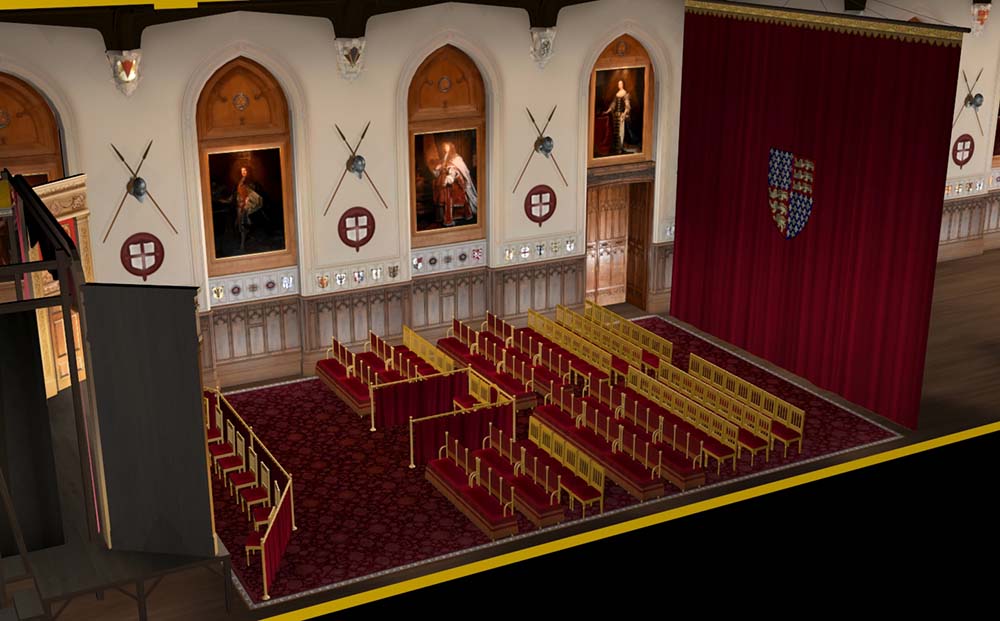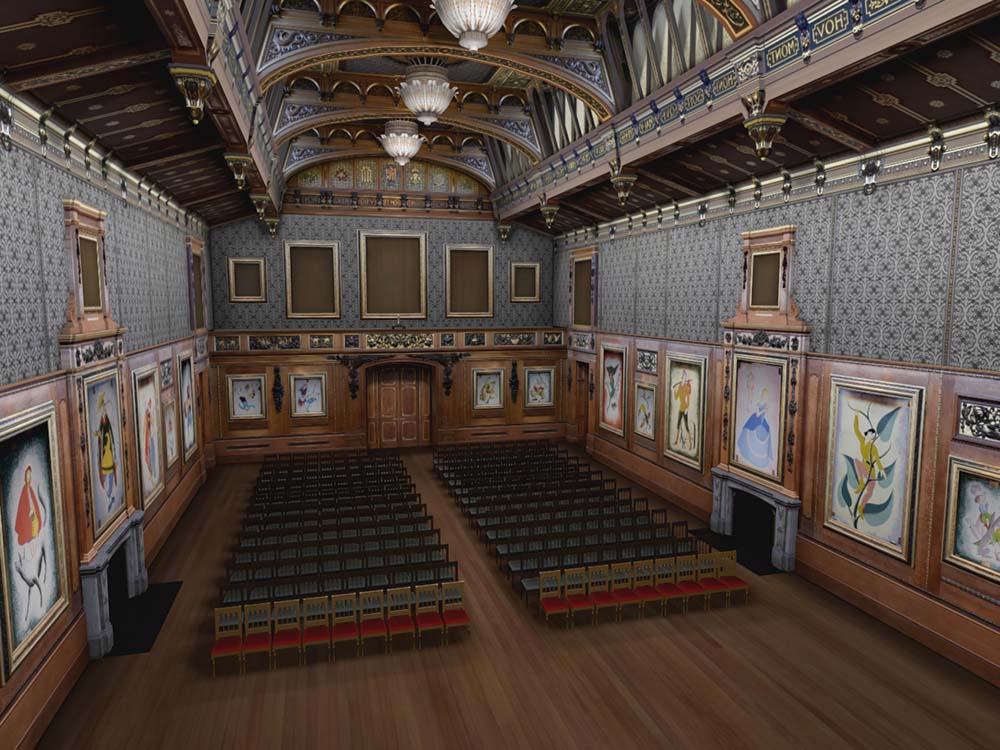This scene is unusual in the play in that Shakespeare does not assign it a specific setting, but in Shakespeare's source - Raphael Holinshed’s Chronicles - it is suggested that the appropriate location would be the Tower of London.
However, the choice had particular resonance in this production's very first staging, which took place in St George's Hall itself: a scaled-down performance staged as part of Victoria and Albert's recurring private theatricals held at Windsor during the winter months. In this medieval space, the play's sense of history, and its interest in Victoria's distant ancestors, came to the fore.




